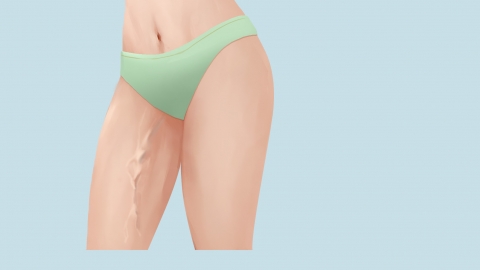How to treat varicose veins
Under normal circumstances, varicose veins may be caused by prolonged standing or sitting, obesity-induced high venous pressure, incompetent lower limb venous valves, deep vein thrombosis in the lower limbs, or post-phlebitis syndrome. It is recommended to seek medical attention promptly, identify the underlying cause, and improve symptoms under a doctor's guidance through general management, medication, or surgical treatment. Specific causes are analyzed as follows:

1. Prolonged standing or sitting: Maintaining the same posture for extended periods impedes blood return in the lower limb veins, increasing venous pressure and gradually leading to varicose veins, which manifest as prominent blue veins on the legs. It is advisable to get up and move every 30–60 minutes, performing activities such as toe raises or walking to promote blood circulation.
2. Obesity-induced high venous pressure: Excess body weight increases pressure on the lower limb veins. Long-term compression can lead to vascular dilation and deformation, resulting in varicose veins. Weight reduction through balanced diet and exercises like jogging or swimming helps reduce venous pressure in the lower limbs.
3. Incompetent lower limb venous valves: When venous valves fail to close properly, blood reflux occurs, increasing venous pressure and causing varicosities, often accompanied by leg heaviness, swelling, and fatigue. Patients should take medications such as micronized purified flavonoid fraction tablets, diosmin tablets, or calcium dobesilate capsules as prescribed to improve venous wall elasticity and relieve symptoms.
4. Deep vein thrombosis in the lower limbs: Blood clots obstruct deep veins, impeding blood return and causing compensatory dilation of superficial veins, leading to varicosities. This condition may be accompanied by leg swelling and pain. Patients should follow medical advice to take anticoagulant medications such as warfarin sodium tablets, rivaroxaban tablets, or dabigatran etexilate capsules to prevent worsening of the clot.
5. Post-phlebitis syndrome: After recovery from phlebitis, thickened vein walls and narrowed lumens impair blood return, secondarily leading to varicose veins. Symptoms may include skin pigmentation and itching. If conservative treatments such as medication and compression stockings are ineffective, endovenous laser ablation may be performed. This procedure uses laser energy to close off diseased veins, redirecting blood flow through healthy veins.
In daily life, avoid soaking feet in hot water for prolonged periods, as this may exacerbate venous dilation and worsen symptoms. When resting, elevate the legs above heart level to facilitate blood return. Increase dietary intake of fiber-rich foods to prevent constipation and avoid excessive straining during bowel movements, which can increase abdominal pressure and impair venous return.









